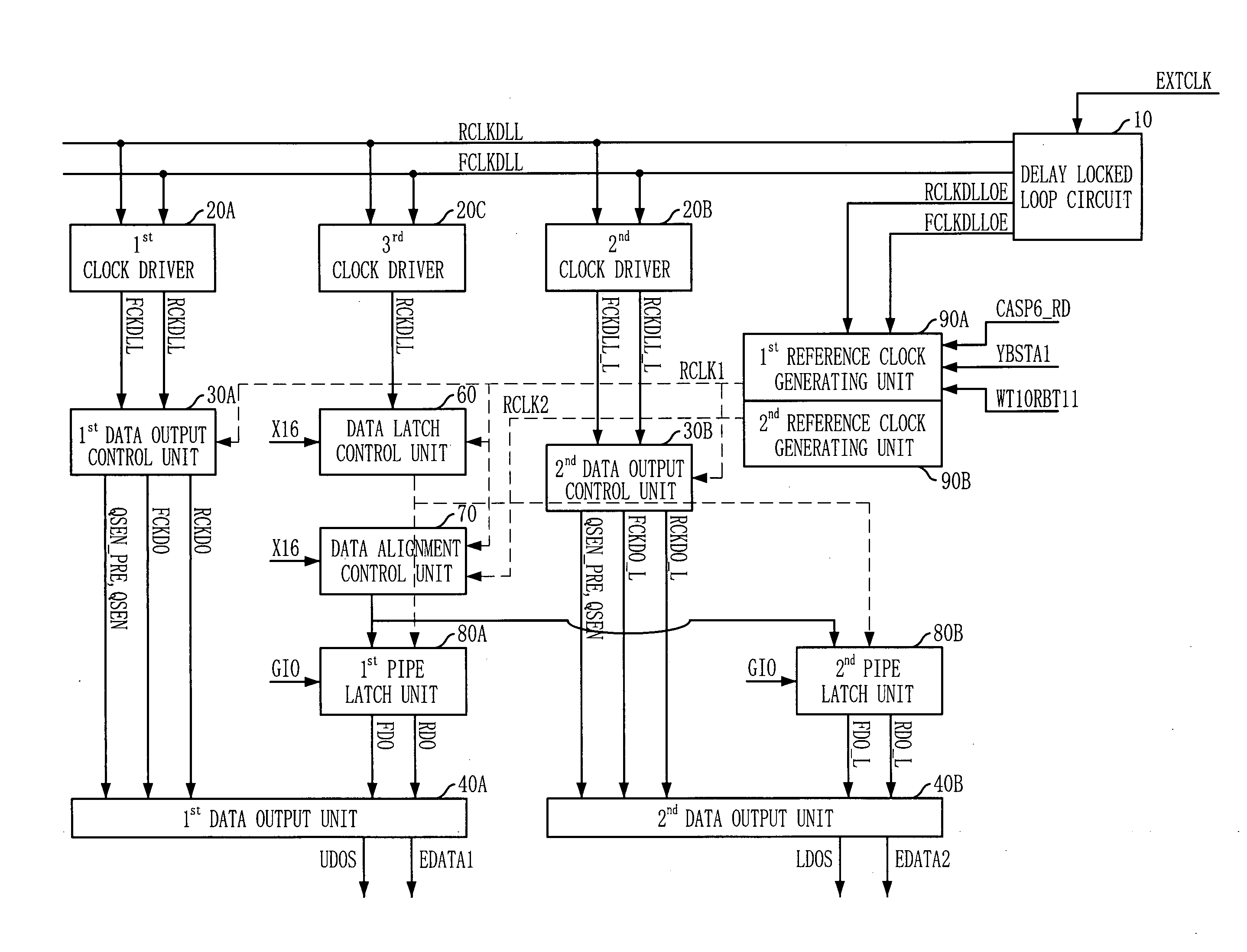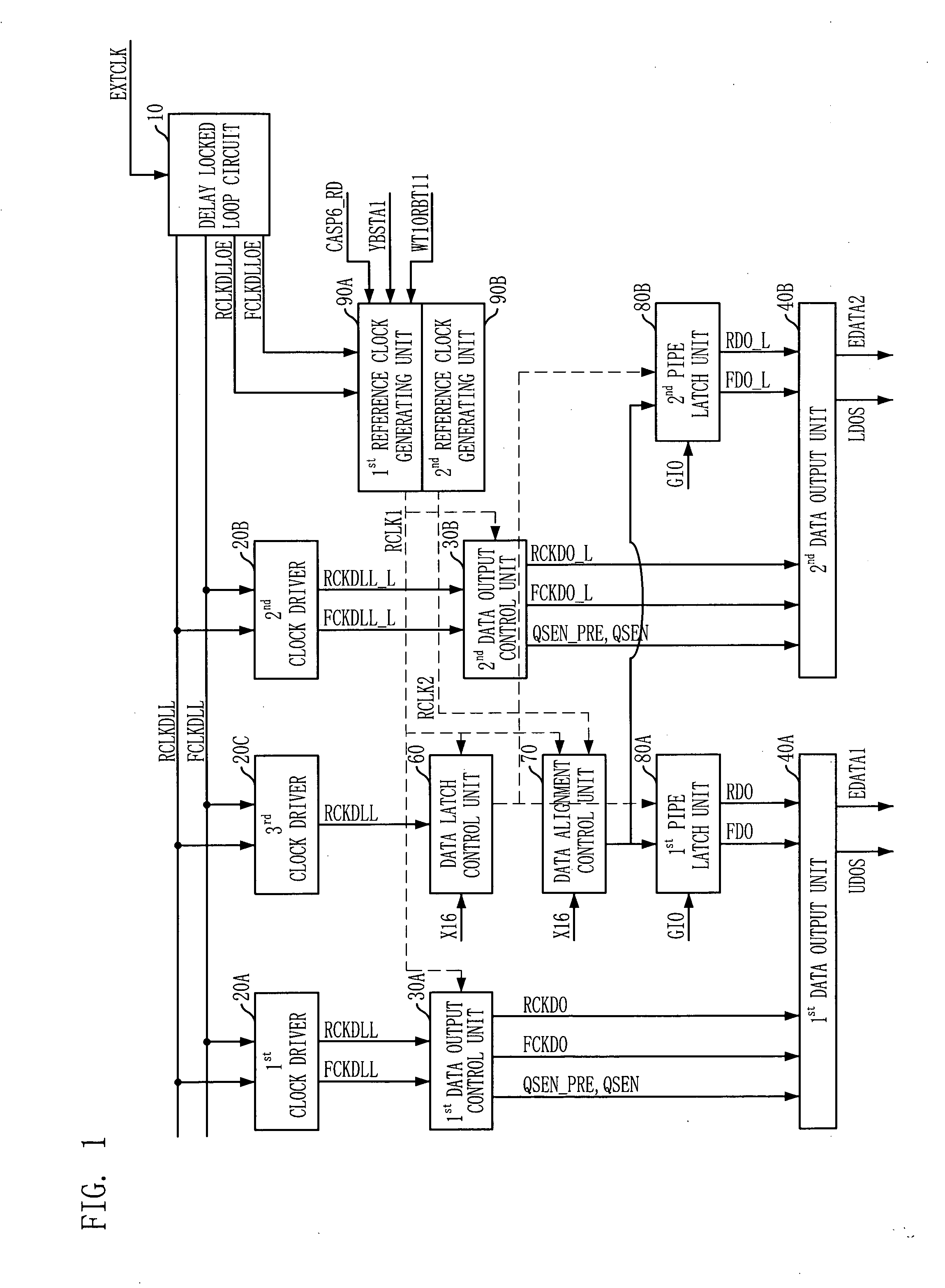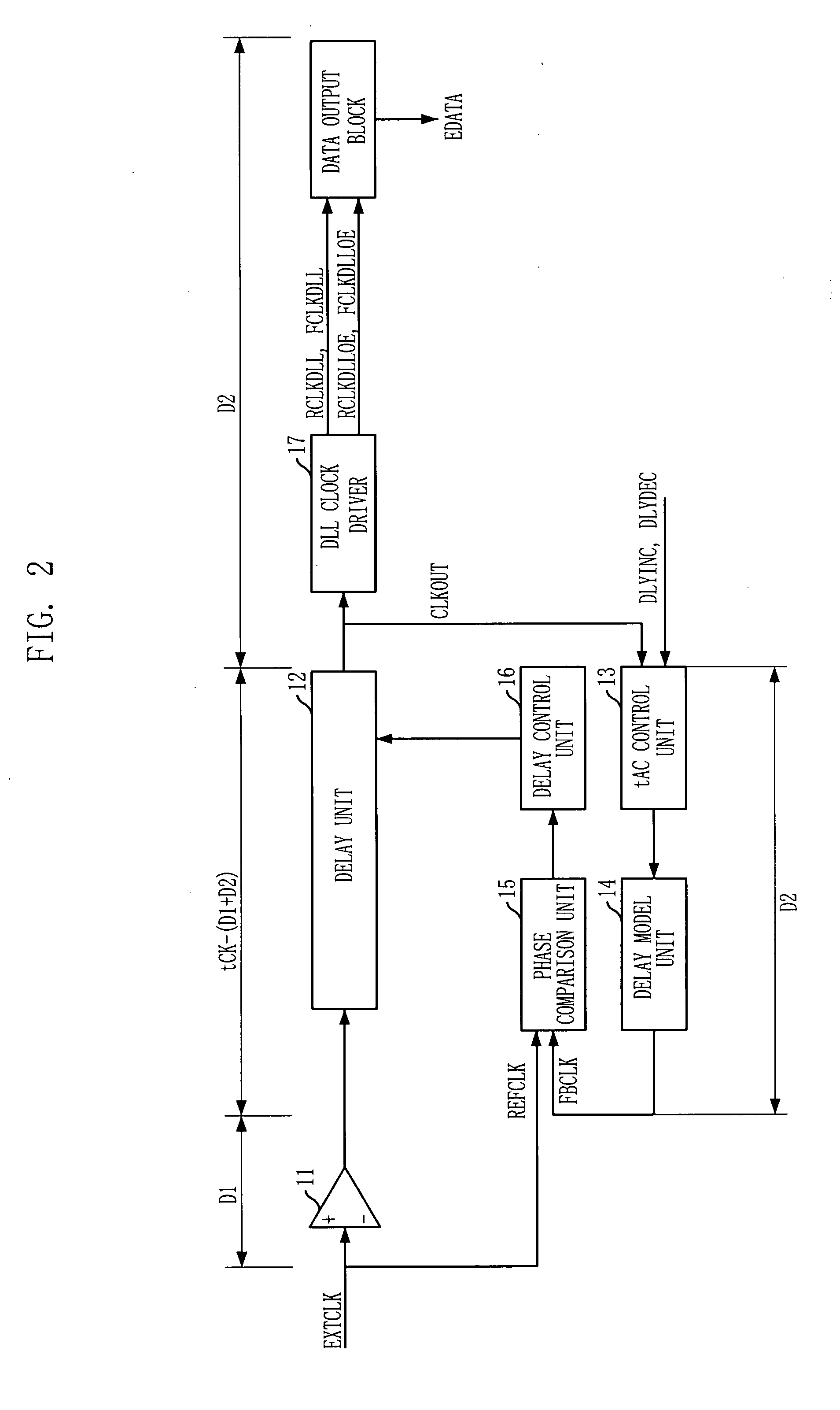Semiconductor memory device capable of controlling tAC timing and method for operating the same
- Summary
- Abstract
- Description
- Claims
- Application Information
AI Technical Summary
Benefits of technology
Problems solved by technology
Method used
Image
Examples
first embodiment
[0040]FIG. 5 is a block diagram illustrating the semiconductor memory device according to the present invention. The semiconductor memory device includes a delay locked loop circuit 100, a tAC control unit 100A, a data output block 1000 and a reference clock generating unit 2000. The data output block 1000 includes a data output timing control unit 1100, a data latch unit 1200, a data strobe signal generating unit 1300 and a data output unit 1400.
[0041]The delay locked loop circuit 100 produces a first delay locked clock signals RCLKDLL and FCLKDLL and a second delay locked clock signals RCLKDLLOE and FCLKDLLOE. The tAC control unit 100A outputs a delay-adjusted clock signals RDLL and FDLL by controlling the delay value of the first delay locked clock signals RCLKDLL and FCLKDLL in response to a control signals DLYINC and DLYDEC. The tAC control unit 100A is provided to adjust the tAC timing. The tAC control unit 100A controls the output timing of the data outputted from the data ou...
second embodiment
[0045]FIG. 6 is a block diagram illustrating a semiconductor memory device according to the present invention. The semiconductor memory device includes a delay locked loop circuit 100, a tAC control unit 100A, first to third clock drivers 200A to 200C, first and second data output control units 300A and 300B, first and second data output units 400A and 400B, a data latch control unit 600, a data alignment control unit 700, first and second pipe latch units 800A and 800B, and a first and second reference clock generating units 900A and 900B. Since the circuit blocks illustrated in FIG. 6 performs the same operation as those illustrated in FIG. 1, the detailed description related to these blocks will be omitted. The tAC control unit 100A controls the delay value of the first delay locked clock signals RCLKDLL and FCLKDLL and then outputs delay-adjusted clock signals RDLL and FDLL.
[0046]Moreover, the first and second clock drivers 200A and 200B and the first and second data output cont...
third embodiment
[0049]FIG. 9 is a block diagram illustrating a semiconductor memory device according to the present invention. The semiconductor memory device illustrated in FIG. 9 is characterized in that a data latch timing control unit 100C is additionally included in the semiconductor memory device of FIG. 6. The data latch timing control unit 100C controls the delay value of the second delay locked clock signals RCLKDLLOE and FCLKDLLOE outputted from the delay locked loop circuit. In this way, the processing timing and the output timing of data can be optimally maintained by differently controlling the delay values of the first delay locked clock signals RCLKDLL and FCLKDLL and the second delay locked clock signals RCLKDLLOE and FCLKDLLOE.
[0050]As apparent form the above, in the present invention, the operation margin for processing the output data is sufficiently obtained and the tAC timing is effectively adjusted. Therefore, the semiconductor memory device according to the present invention ...
PUM
 Login to View More
Login to View More Abstract
Description
Claims
Application Information
 Login to View More
Login to View More - Generate Ideas
- Intellectual Property
- Life Sciences
- Materials
- Tech Scout
- Unparalleled Data Quality
- Higher Quality Content
- 60% Fewer Hallucinations
Browse by: Latest US Patents, China's latest patents, Technical Efficacy Thesaurus, Application Domain, Technology Topic, Popular Technical Reports.
© 2025 PatSnap. All rights reserved.Legal|Privacy policy|Modern Slavery Act Transparency Statement|Sitemap|About US| Contact US: help@patsnap.com



